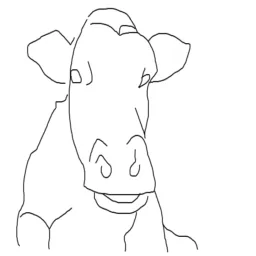Transforming Keypoint Detection: The Revolutionary Role of Sketches in Few-Shot Learning

In the realm of computer vision, the detection of keypoints—vital markers on images for object recognition and image understanding—has been a significant area of research. However, a new study titled "Doodle Your Keypoints: Sketch-Based Few-Shot Keypoint Detection" delves into an innovative approach to tackle the challenges associated with few-shot learning in keypoint detection by harnessing human sketches. This research paves the way for a more versatile and effective method of keypoint detection, especially when annotated data is scarce.
The Challenge of Traditional Keypoint Detection
Traditional keypoint detection methods largely depend on large, annotated datasets for training, which are not always available. This can lead to a significant gap when the model encounters novel classes or keypoints not present in its training data. The study highlights that current strategies, focused on direct regression or heatmap regression techniques, struggle in few-shot scenarios where only a handful of images are available for training.
Sketching a Solution: The Use of Sketches
Enter sketches: a popular form of human representation that can bridge this gap. The research proposes using sketches as a support modality to train models in a few-shot setting. The rationale is simple—sketches are easier and quicker to annotate than photographs, thus providing a source-free alternative. The method aims to adapt sketch-based inputs to localize keypoints in unseen images effectively.
Key Innovations in the Framework
The proposed framework stands out by leveraging a prototypical setup that combines a novel grid-based locator (GBL) and prototypical domain adaptation techniques. By focusing on cross-modal embeddings, this research addresses the inherent disparities between sketches and photographs, which can often complicate the keypoint localization task. One of the key challenges of this approach has been managing the variability in sketch styles from different users since sketches are highly subjective and expressive.
Impressive Results Through User-Centric Design
Through extensive experimentation using datasets such as the Animal Pose dataset, the research demonstrates significant success in achieving few-shot convergence on novel keypoints across various classes. In scenarios where traditional methods struggled, this framework showed robustness, reflecting its capability to adaptively learn from different user sketch styles while maintaining accuracy in keypoint detection. The results reveal that the framework boosts accuracy by leveraging both style-agnostic and domain adaptation techniques, considerably outperforming previous benchmarks.
Implications for Future Research
This research opens the door for further exploration in combining sketch-driven techniques within few-shot learning paradigms. By making sketch-based keypoint detection a feasible solution, it encourages the development of more user-friendly AI systems capable of learning from fewer data points while improving performance across various applications in real-world scenarios. As we look ahead, the principles outlined in this study could shape how we approach computer vision tasks, particularly in resource-constrained environments.